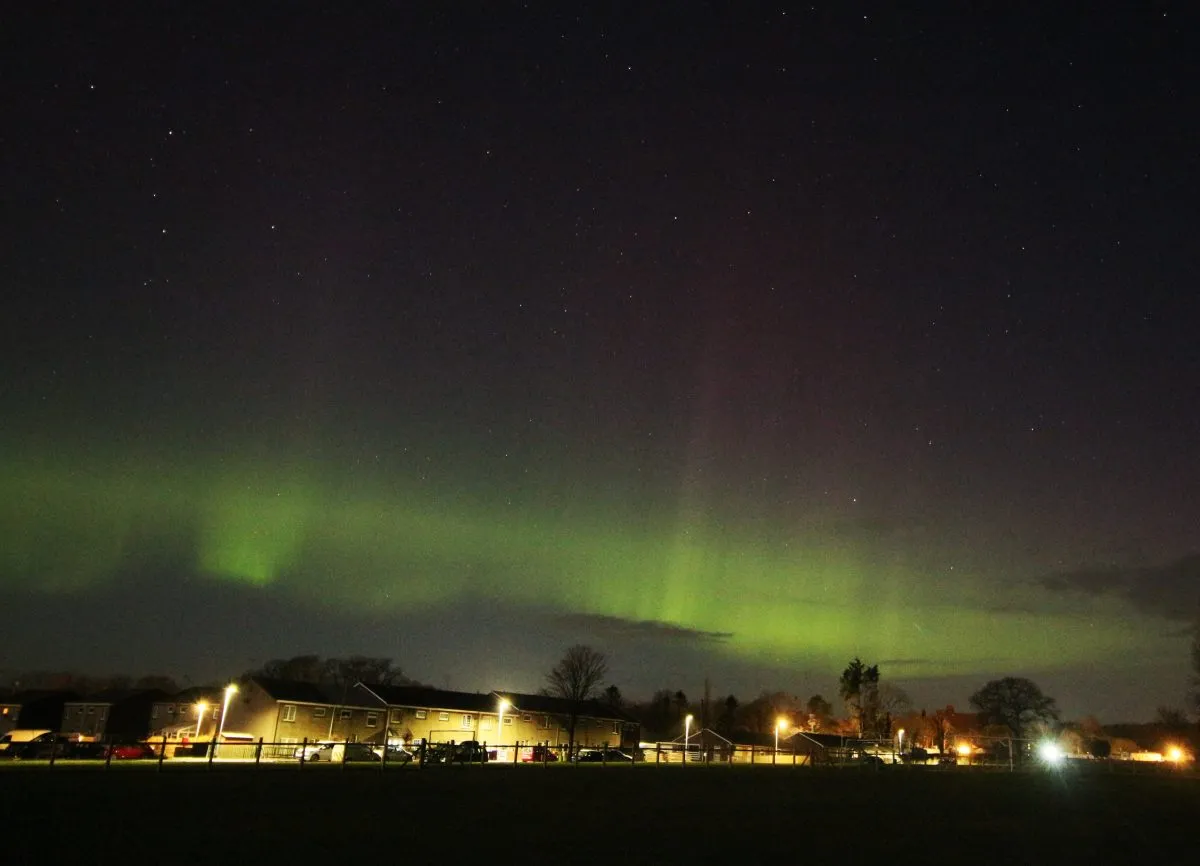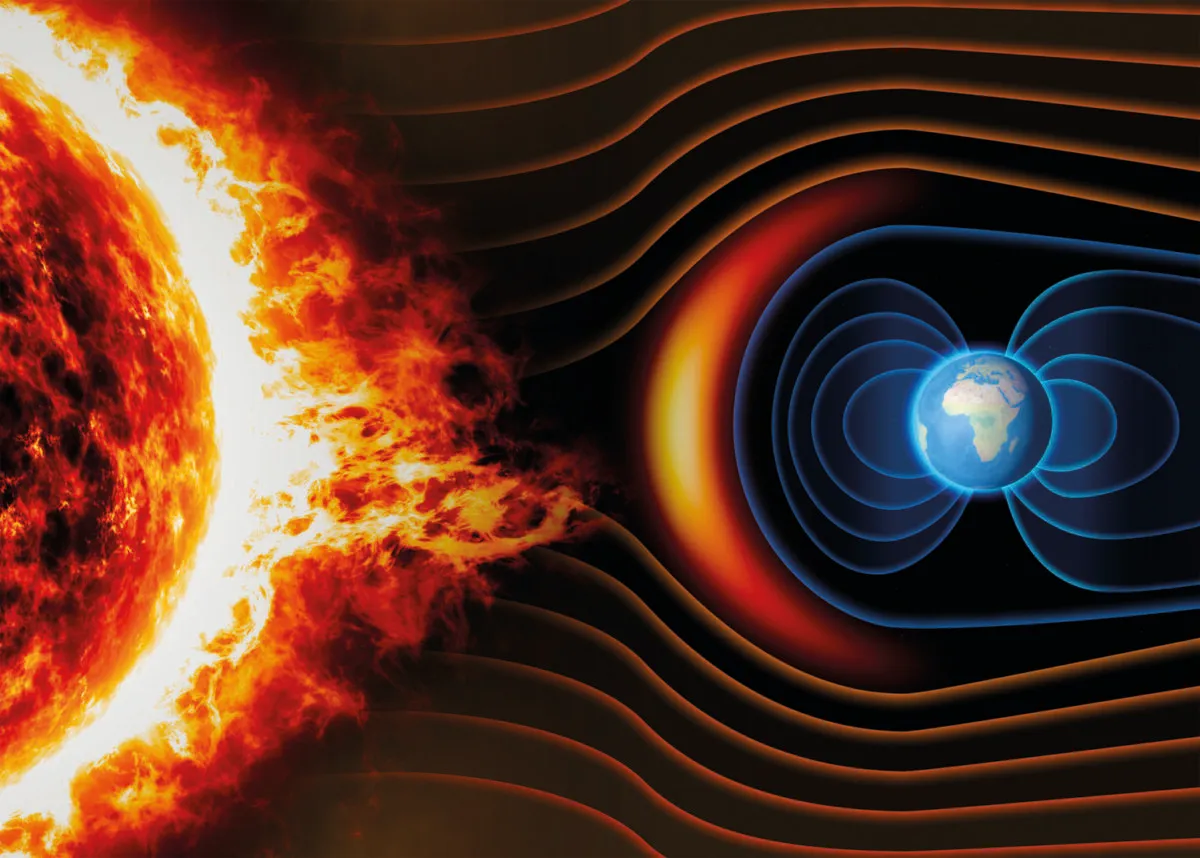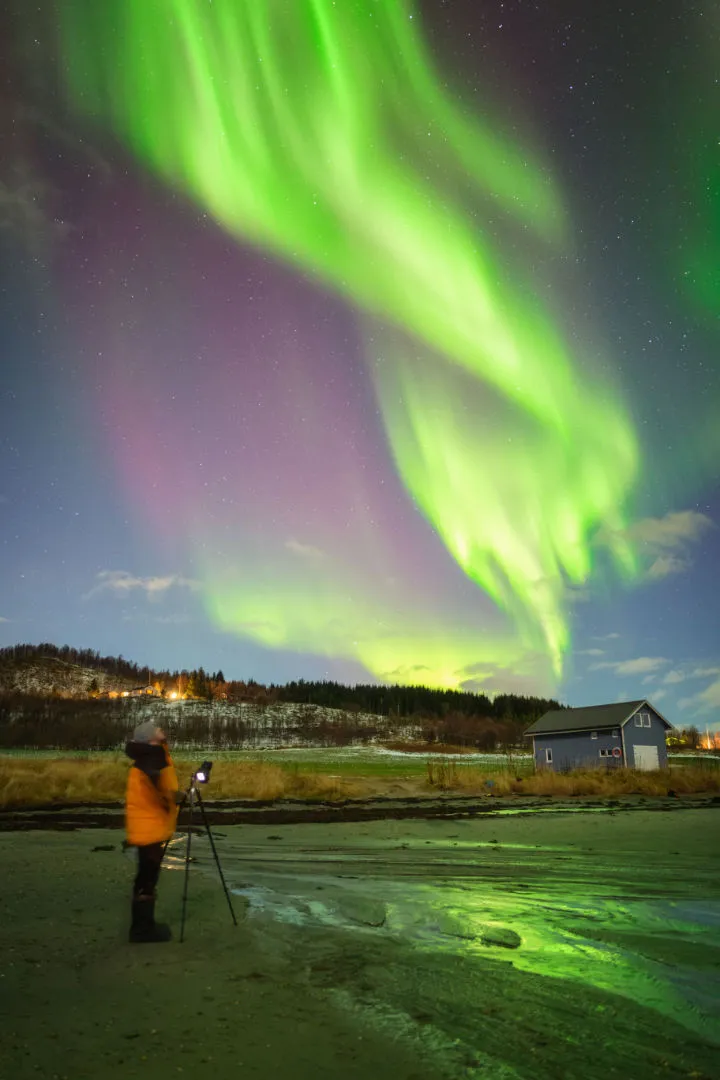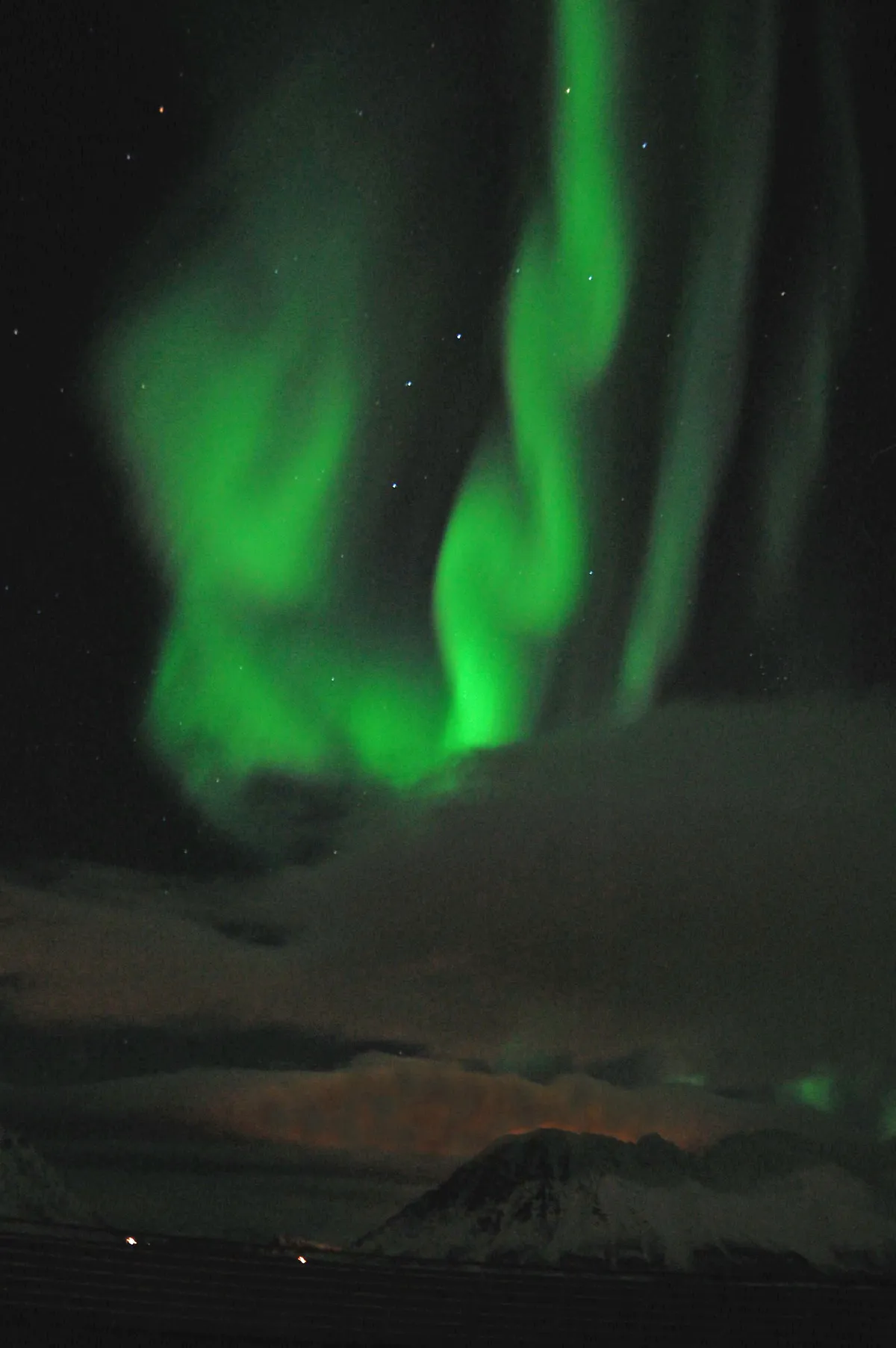The past few years I have spent working on The Sky at Night have been a privilege and it has led to some incredible opportunities: reporting on the descent of the Philae lander onto Comet 67P; being present at NASA as New Horizons flew past Pluto, and discussing some of the first images that the probe returned.
Perhaps one of my favourite astronomical experiences thus far, however, has been when I was able to fulfil a childhood dream of seeing the Northern Lights.
We looked into a number of options to hunt down the aurora borealis.
They can be seen from northern Scotland, but the probability of seeing them far south in the UK is low.

Flying north from Leeds on a dedicated ‘aurora flight’ was also considered, but in the end we settled on a visit to Tromsø, a Norwegian town high in the Arctic Circle amongst the fjords.
With an 80% chance of seeing the Northern Lights from there, it was definitely our best shot.
Aurorae were once simply thought to be caused by the flow of charged particles from the Sun – the solar wind – interacting with the Earth’s magnetic field: as the particles spiralled down Earth’s magnetic field lines, they ionised gases in the atmosphere causing them to glow, just like a neon tube.
However, new research indicates that this cannot be the complete picture.
Measurements of particle speeds show that they themselves do not have enough energy to generate the light that we see.

Another source of energy is needed, something that kicks the gas particles into the Earth’s atmosphere at high speed.
Scientists eventually realised that it was energy ‘banked’ into the electric and magnetic field of the solar wind itself.
As the charged gas (plasma) shoots out of the Sun, it generates its own magnetic field, which travels to Earth with the particles.
As this hits Earth’s own magnetic field, the two fields react with each other, compressing and pushing and twisting until – suddenly – the magnetic field lines themselves snap and reform.
And in that snapping a flash of energy is released; it is this kick that speeds up the articles as they head down into Earth’s atmosphere, and that fast, dynamic kick is enough to cause them to ionise the atmosphere.

What does the aurora borealis look like?
The result is magnificent: I had expected shimmering bands of light filling the whole sky from the pictures I had seen, but what surprised me was the dynamic nature of the aurora’s movement.
Scintillations danced fast across the sky, sheets of light expanded like ink spreading on blotting paper.
It was one of the most glorious astronomical phenomena I have seen to date and it brought to life the movement of the solar wind.
I had known it was there, but to see it displayed in a flurry of light was truly amazing.

Even with our better understanding of the phenomena the aurora is still throwing up mysteries.
Quite why it forms into regular patterns remains hard to explain, and there’s also a phenomena known as ‘Steve’, in which a column of light is produced, the causes of which are still being investigated.
It’s good to know that there are plenty of reasons for me to try and see them again sometime!
This article originally appeared in the January 2018 issue of BBC Sky at Night Magazine.



